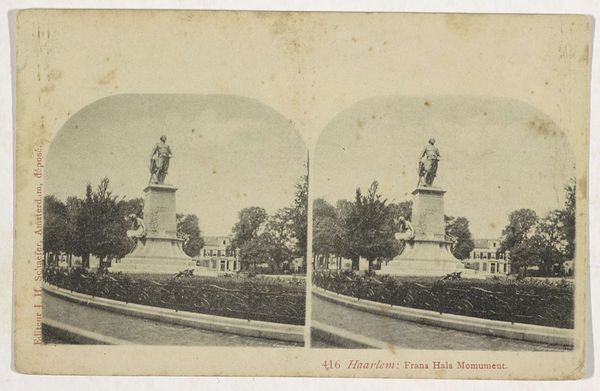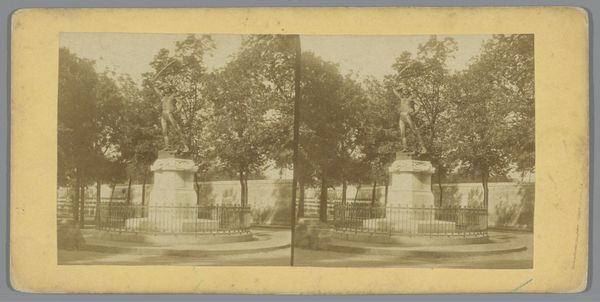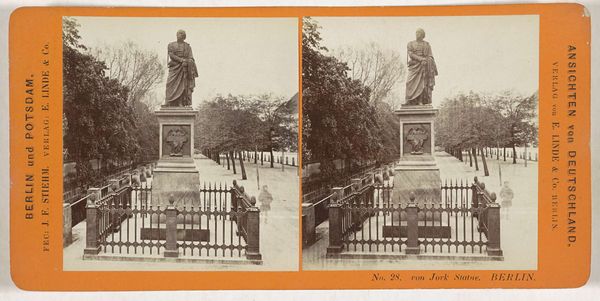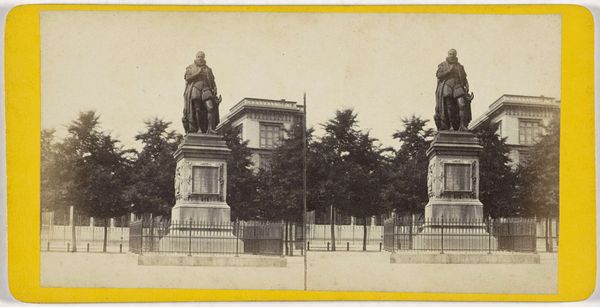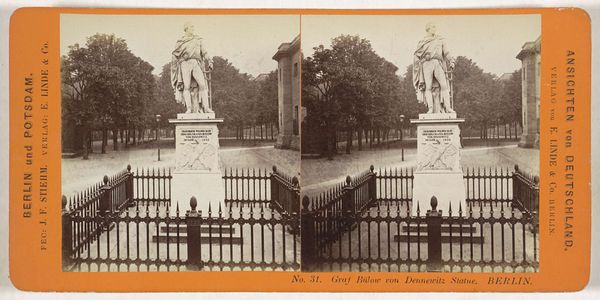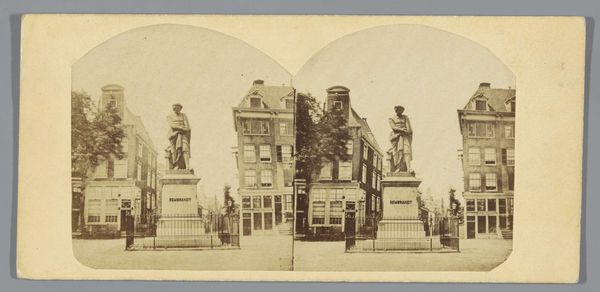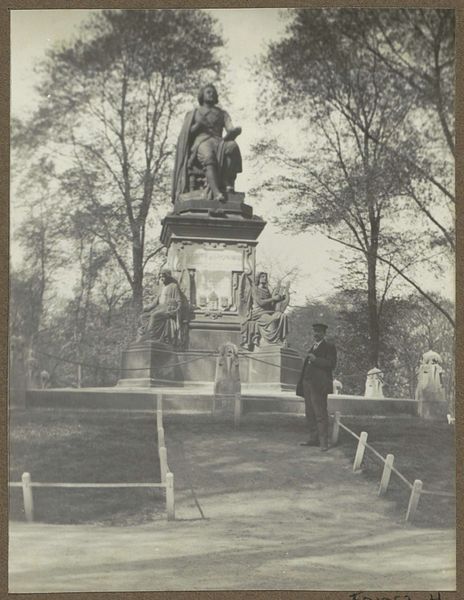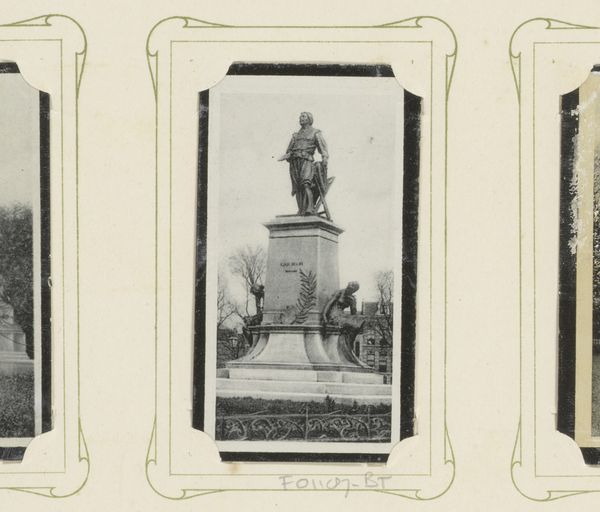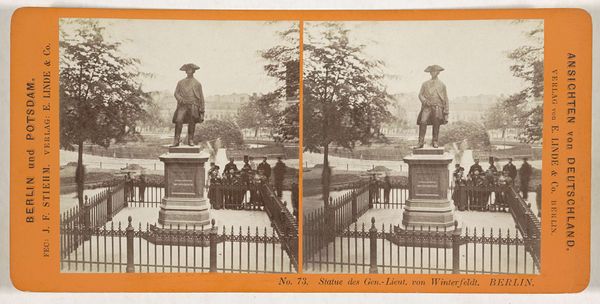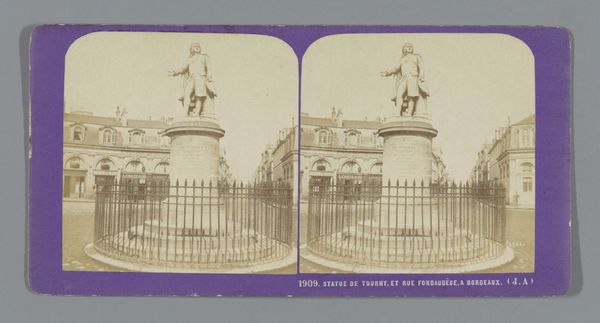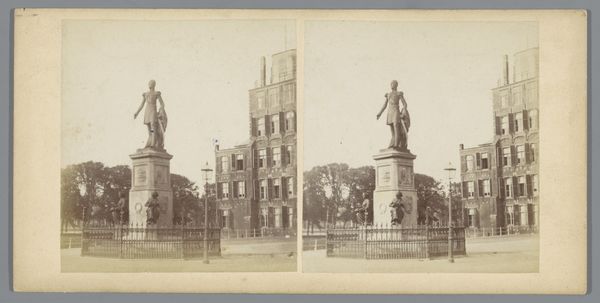
Gezicht op het standbeeld van Willem van Oranje op het Plein in Den Haag c. 1864 - 1875
0:00
0:00
Dimensions: height 87 mm, width 177 mm
Copyright: Rijks Museum: Open Domain
Curator: Immediately I feel a strange sense of timelessness gazing upon this image of the statue of William of Orange in The Hague. The work, attributed to the studio of Léon & Lévy, was captured between 1864 and 1875, and is presented as a stereoscopic print. Editor: Timeless is a good word. The photograph seems almost like an artifact itself, preserved in shades of grey and sepia tones. What I find interesting is its depiction of public space and memory-making; how do material things, such as monuments, contribute to such cultural identities? Curator: Exactly! It is about the manufacturing of Dutch identity. The statue itself is rigidly neoclassical, this need for order in a newly unified nation. Yet, this print makes me ponder the layers of reproduction. It's not just a photo, but a copy meant for viewing in stereo, enhancing that sense of realness. Is reality truly ‘real’ when we double it? Editor: Right, that speaks volumes about industrial practices too, how reproducible artworks like photographs helped normalize and disseminate these idealized images. These photographs were goods, commodities traded between Europe. Notice the collection names written in French, “Vues de Hollande”. Curator: You see it so practically, which I appreciate, I think. But, practically, isn't it wonderful? The people clustered at the statue's base, dwarfed by Willem van Oranje's stoic posture – little stories playing out within the larger narrative of Dutch heritage. A pocket-sized version of patriotism for middle-class parlors. Editor: And let’s not forget that the image is in stereo. Its materiality is directly intertwined with technological and market demands. The process created an illusion of depth that made that miniature patriotism so appealing to buyers. We could examine all of that for how nations commodify themselves on world stages... Curator: It almost feels cynical. Editor: Realistic! Curator: No, that's a fair counter, in your fashion! But, personally, I am grateful. It leaves me feeling like I’ve time-traveled to a place not exactly real but somehow emotionally authentic. Editor: Indeed. I'll carry the memory of those material layers—paper, chemicals, lenses, and market forces—knowing that even the most venerated symbols are borne of production and economics.
Comments
No comments
Be the first to comment and join the conversation on the ultimate creative platform.

